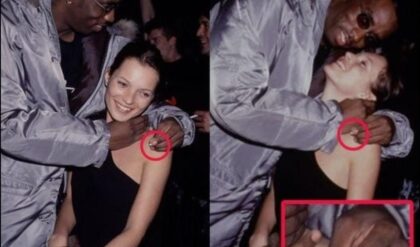The innermost coffin of Tutankhamun is is a highly significant artifact from ancient Egypt. It is made of a solid gold and covered with incised decorations and inscriptions inside and outside, with the names and epitaph of the deceased king and protective texts. It is inlaid with semiprecious stones and coloured glass.
The coffin’s shape is that of Osiris holding the sacred insignia, the heka scepter and the flail. The vulture and the uraeus, or rearing cobra, protect his forehead. The divine beard is made of gold inlaid with blue glass.

Innermost Gold Coffin of Tutankhamun. Egyptian Museum, Cairo. JE 60671
The innermost coffin of Tutankhamun is intricately decorated with various symbols and hieroglyphs, and it was designed to protect and preserve the body of the young king Tutankhamun. Deities of Upper and Lower Egypt protect the body of the coffin with their wings.
The innermost coffin, known as the solid gold coffin or the innermost shrine, is made entirely of gold and weighs approximately 110.4 kilograms (243 pounds). Inside it lay the king’s mummy whose head was covered with the iconic gold mask of the boy king. This is the third and innermost of three mummiform coffins of Tutankhamun.
The mummy itself now rests in the outermost mummiform coffin in the tomb at Thebes. Soon after the discovery of the tomb, both the inner and middle coffins were transferred to the Egyptian Museum Cairo; while, the outer gilded coffin was left inside the tomb.
“The story of the tomb of Tutankhamun has been told so many times that fact and fiction long ago agreed to share the burden. A series of events that took place over several weeks – in fact, several months and years – have collapsed into a single moment elided into one word and act, ‘discovery’.
Tutankhamun, also known worldwide as the Golden Pharaoh, was an 18th Dynasty king of the New Kingdom. He is best known for his intact tomb and treasured funerary collection.

Howard Carter examining the third coffin of gold of Tutankhamun, 1923. Photo: Harry Burton
The King’s mysterious death at a very young age has continued through the years to fascinate millions throughout the years. He was buried within his tomb (KV62) located at the Valley of the Kings, on the west bank of Luxor and was discovered in November 1922 by the British archaeologist Howard Carter. The discovery at that time received worldwide press coverage, capturing public imagination.
The king’s burial chamber is 6m x 4m wide and housed the king’s outermost rectangular-shaped quartzite sarcophagus. Its four corners are decorated with figures of the four deities of protection whose outspread wings safeguard the sarcophagus and the mummy of the king.
It contains three anthropoid coffins nested within each other depicting the king in the Osirian position. It makes for a dramatic tale but misses out the dull yet telling details that archaeological work in occupied Egypt required, as well as the confusions, uncertainties, and adaptations that any work entails.

Upper part of the third and innermost anthropoid coffin which contained the mummy of King Tutankhamun
It ignores the glaring oversights of Egyptian archaeology as well: ‘It was a thrilling moment for an excavator, quite alone save his native staff of workmen,’ was how Carter characterized his first view of that sealed doorway at the bottom of the steps.
The ease with which he could dismiss Ra’is Ahmed and all other Egyptians as full participants in these events speaks as clearly of colonial banality as the advertisements in his [red-bound] Letts [Indian and Colonial] diary do.”
— Treasured: How Tutankhamun Shaped a Century, by Christina Riggs (#aff)

Innermost Gold Coffin of Tutankhamun
The discovery of this coffin and the treasures within the tomb provided valuable insights into the art, culture, and beliefs of ancient Egypt. It is considered a masterpiece of ancient Egyptian craftsmanship and is one of the most iconic and well-preserved artifacts discovered in the tomb of Tutankhamun.
New Kingdom, 18th Dynasty, reign of Tutankhamun, ca. 1332-1323 BC. From the Tomb of Tutankhamun (KV62), Valley of the Kings, West Thebes. Now in the Egyptian Museum, Cairo. JE 60671
News
Unveiling the Ingenious Engineering of the Inca Civilization: The Mystery of the Drill Holes at the Door of the Moon Temple in Qorikancha – How Were They Made? What Tools Were Used? What Secrets Do They Hold About Inca Technology? And What Does Their Discovery Mean for Our Understanding of Ancient Construction Methods?
In the heart of Cusco, Peru, nestled within the ancient Qorikancha complex, lies a fascinating testament to the advanced engineering prowess of the Inca civilization. Here, archaeologists have uncovered meticulously angled drill holes adorning the stone walls of the Door…
Unveiling the Sun Stone: Aztec Relic from the Reign of Moctezuma II (1502-1520) – What Secrets Does It Hold? How Was It Used? What Symbolism Does It Carry? And What Does Its Discovery Reveal About Aztec Culture?
In the heart of Mexico City, amidst the bustling Plaza Mayor, lies a silent sentinel of ancient wisdom and artistry – the Sun Stone. This awe-inspiring artifact, dating back to the reign of Moctezuma II in the early 16th century,…
Uncovering the Past: Rare 1,000-Year-Old Copper Arrowhead Found – Who Crafted It? What Was Its Purpose? How Did It End Up Preserved for So Long? And What Insights Does It Offer into Ancient Societies?
In the realm of archaeology, every discovery has the potential to shed light on our shared human history. Recently, a remarkable find has captured the attention of researchers and enthusiasts alike – a rare, 1,000-year-old copper arrowhead. This ancient artifact…
Unveiling History: The Discovery of an Old Sword in Wisła, Poland – What Secrets Does It Hold? Who Owned It? How Did It End Up There? And What Does Its Discovery Mean for Our Understanding of the Past?
In a remarkable archaeological find that has captured the imagination of historians and enthusiasts alike, an old sword dating back to the 9th-10th century AD has been unearthed in Wisła (Vistula River) near Włocławek, Poland. This discovery sheds light on the rich…
Unveiling the Hidden Riches: Discovering the Treasure Trove of a Notorious Pirate – Who Was the Pirate? Where Was the Treasure Found? What Historical Insights Does It Reveal? And What Challenges Await Those Who Seek to Uncover Its Secrets?
A group of divers said on May 7 that they had found the treasure of the infamous Scottish pirate William Kidd off the coast of Madagascar. Diver Barry Clifford and his team from Massachusetts – USA went to Madagascar and…
Excavation Update: Archaeologists Unearth Massive Cache of Unopened Sarcophagi Dating Back 2,500 Years at Saqqara – What Secrets Do These Ancient Tombs Hold? How Will They Shed Light on Ancient Egyptian Burial Practices? What Mysteries Await Inside? And Why Were They Buried Untouched for Millennia?
Egypt has unearthed another trove of ancient coffins in the vast Saqqara necropolis south of Cairo, announcing the discovery of more than 80 sarcophagi. The Tourism and Antiquities Ministry said in a statement that archaeologists had found the collection of colourful, sealed caskets which were…
End of content
No more pages to load











